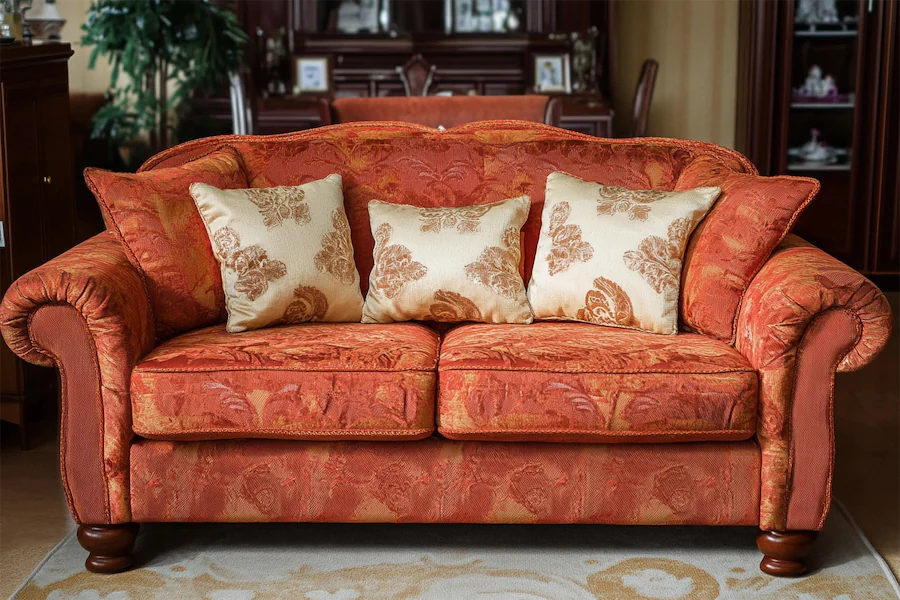A comfortable sofa is a cornerstone of any living space, offering both relaxation and aesthetic appeal. This article delves into the concept of comfort in sofas, tracing their historical evolution, identifying key features that enhance comfort, exploring various applications, and providing considerations for selecting the ideal comfortable sofa.
Introduction to Comfortable Sofas
Sofas serve as central elements in homes, offices, and public spaces, providing seating and contributing to the overall ambiance. The comfort of a sofa is influenced by factors such as design, materials, and ergonomics, all tailored to meet the diverse needs of users.
History and Origins of Comfortable Sofas
The evolution of sofas reflects changing societal values and technological advancements:
- Early Designs: In ancient civilizations like Egypt and Greece, seating was primarily functional, often taking the form of wooden benches with minimal cushioning. Comfort was secondary to utility during these times.
- Renaissance to Baroque Periods: The Renaissance era introduced more ornate and comfortable seating, with sofas featuring intricate carvings and luxurious fabrics, emphasizing opulence and comfort.
- 18th Century: The Chesterfield sofa emerged during this period, characterized by deep button tufting and rolled arms, symbolizing sophistication and comfort.
- 20th Century Modernism: Designers like Le Corbusier introduced minimalist sofas with sleek lines, focusing on functionality and comfort, exemplified by the Grand Confort series.
Key Features of Comfortable Sofas
Several elements contribute to a sofa’s comfort:
- Cushioning: High-density foam cores wrapped in softer materials provide both support and plushness. Some designs incorporate down or memory foam for a “cloud-like” experience.
- Ergonomics: Proper seat depth and backrest angle support natural posture, reducing strain and enhancing comfort. For instance, sofas with angled backs or pitched sofa backs are ideal for those who prefer relaxing deeply into the sofa.
- Upholstery: Soft, breathable fabrics like linen or performance textiles that are stain-resistant and durable enhance comfort and maintenance. Leather options offer a different tactile experience and are often chosen for their durability and aesthetic appeal.
- Frame Construction: Sturdy hardwood frames ensure durability and prevent sagging, maintaining comfort over time. Modular designs allow for flexibility and customization to fit various spaces and user preferences.
Applications of Comfortable Sofas
Comfortable sofas are versatile and find applications in various settings:
- Residential Spaces: Living rooms and family rooms often feature plush sofas designed for relaxation and socialization. Sectional sofas or modular designs are popular in homes for their flexibility and ample seating.
- Commercial Environments: In offices and waiting areas, sofas provide comfort to clients and employees, contributing to a welcoming atmosphere. Designs in these settings often balance comfort with professional aesthetics.
- Hospitality Industry: Hotels and lounges incorporate luxurious sofas to enhance guest experience, often selecting designs that reflect the establishment’s style and ambiance. Durability and ease of maintenance are also key considerations in these environments.
Considerations When Choosing a Comfortable Sofa
When selecting a comfortable sofa, consider the following:
- Space and Size: Measure the intended area to ensure the sofa fits appropriately without overwhelming the space. Consider the sofa’s dimensions, including width, depth, and height, to ensure it complements the room’s layout.
- Intended Use: Determine whether the sofa will be used for formal seating, casual lounging, or as a sleeper for guests, and choose a design that suits these needs. For instance, sleeper sofas or sectionals with reclining features may be ideal for multifunctional spaces.
- Material Preferences: Choose upholstery and cushioning materials based on comfort preferences, durability, and maintenance requirements. Performance fabrics that are stain-resistant and easy to clean are ideal for households with children or pets.
- Budget: Set a budget that balances quality and affordability, keeping in mind that higher-quality materials and construction often lead to greater comfort and longevity. Investing in a well-constructed sofa can provide better value over time.
Conclusion
The quest for a comfortable sofa intertwines historical design evolution with personal preferences and practical considerations. By understanding the key features that contribute to comfort and carefully evaluating individual needs and space constraints, one can select a sofa that offers both relaxation and aesthetic harmony within any environment.
